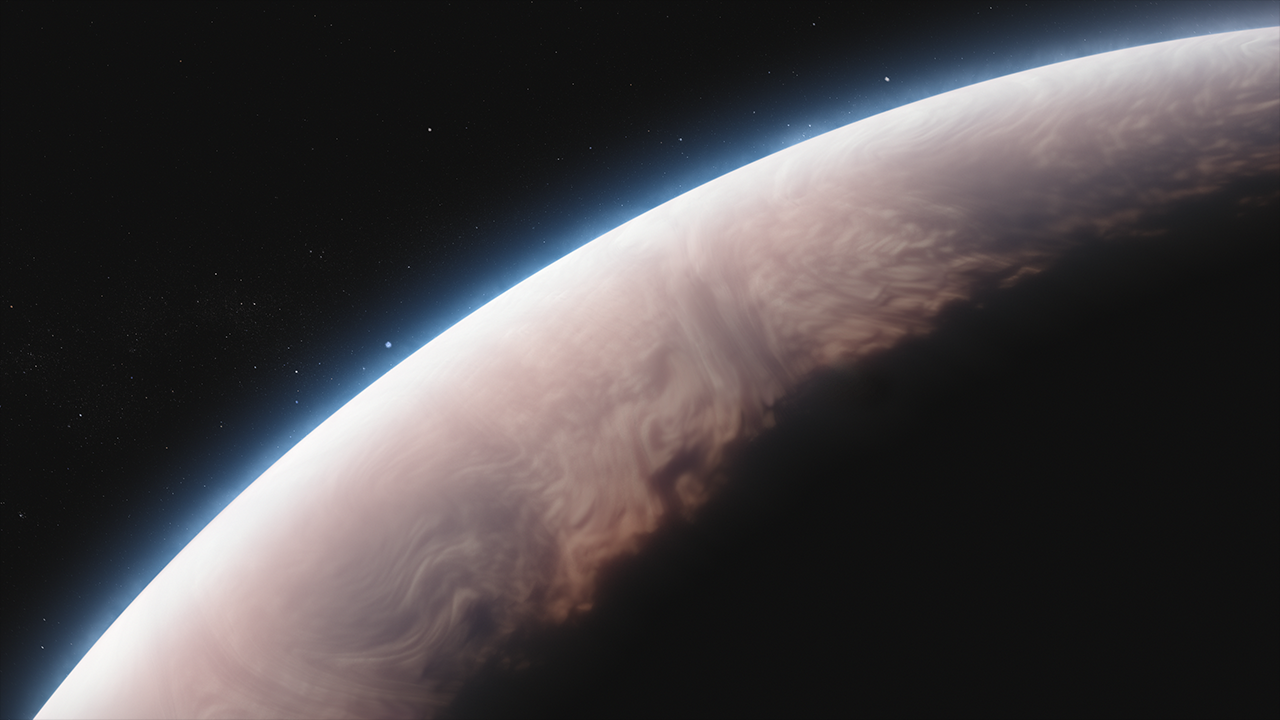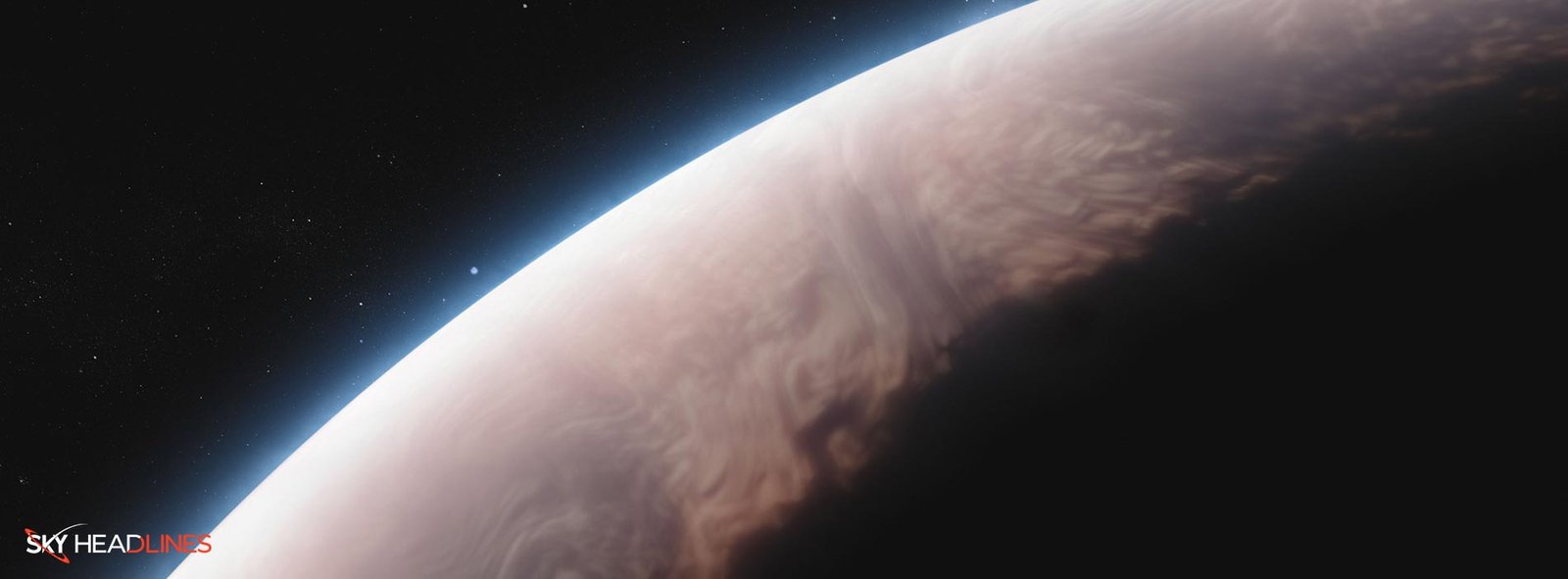Introduction
In an unprecedented breakthrough that is rewriting textbooks and reshaping our understanding of exoplanetary atmospheres, the James Webb Space Telescope (JWST) has discovered the presence of quartz crystals in the atmosphere of the distant exoplanet WASP-17b. Far from being an arbitrary discovery, the identification of these crystals changes our entire comprehension of cloud composition beyond our Solar System, marking a seminal moment in astronomical studies.
The Significance of the Findings
Lead researcher Daniel Grant from the University of Bristol in the United Kingdom expressed his amazement at this discovery.
“Until now, we had information from the Hubble Space Telescope indicating the existence of aerosols in the atmosphere of WASP-17b, but never in our wildest imaginings did we expect these to be composed of quartz,” Grant said.
The fact that a well-known Earth mineral has been found in such a distant celestial body can upend our theories about mineral distribution in the universe, with implications not only for planetary science but also for fields like astrobiology.
Delving Into the Peculiarities of WASP-17b
WASP-17b is a fascinating celestial object, both for its proximity to its host star and its sheer size. Located a staggering 1,300 light-years from Earth, it orbits its star in a blisteringly fast 3.7 days and is positioned only 7.8 million kilometers (approximately 4.9 million miles) away from the star. This close orbit leads to incredibly high dayside temperatures, reaching up to 1,500 degrees Celsius (around 2,732 degrees Fahrenheit).
Despite only possessing half of Jupiter’s mass, the thermal extremities have expanded the exoplanet’s diameter to an astounding 285,000 kilometers (about 176,892 miles). It’s worth highlighting that this makes WASP-17b one of the most inflated or “puffy” planets currently known to astronomers. Its atypical attributes make it a perfect observational target for the cutting-edge capabilities of the James Webb Space Telescope.
Methodology: Employing JWST’s Advanced Instruments
The investigation utilized JWST’s Mid-Infrared Instrument (MIRI) to observe WASP-17b during its transit across its host star. MIRI is designed to measure mid-infrared wavelengths, providing detailed compositional information. During the transit, MIRI quantified the amount of starlight blocked by the planet and that which was partially absorbed by its atmosphere. This differential absorption led to a unique transmission spectrum, which can be likened to a fingerprint for the planet’s atmospheric components.
A More Complex Atmosphere than Initially Thought
Typically, much like Jupiter, the atmosphere of WASP-17b is dominated by hydrogen and helium. But the team discovered that WASP-17b’s atmosphere is more complex than initially assumed. It contains traces of carbon dioxide and water vapor. The real game-changer, however, was the absorption signature at a wavelength of 8.6 microns, signaling the presence of pure quartz crystals. These crystals are approximately 10 nanometers in size and bear a hexagonal prism shape—features strikingly similar to quartz crystals found on Earth.

Hannah Wakeford, another esteemed researcher from Bristol, elaborated on the findings.
“In our initial models, we had hypothesized the presence of magnesium-rich silicates like olivine and pyroxene. What we’re witnessing instead are the base particles that evolve into these more complex silicates under cooler conditions in other exoplanets and brown dwarfs.”
Quartz-Induced Atmospheric Phenomena
The exoplanet’s unique tidal locking, wherein the same side perpetually faces its host star, plays a role in its quartz composition. WASP-17b’s winds reach speeds of up to a thousand miles per hour, enabling the quartz nanoparticles to be swept into high-altitude regions. There, they coalesce into hazes or diffuse clouds, particularly at the boundary between the planet’s day and night sides. These clouds of rock crystals eventually drift into the extremely hot dayside, where they are vaporized.

The Formation of Quartz Crystals in the Atmosphere
In closing, Daniel Grant clarified how such quartz crystals could form under these unique conditions.
“WASP-17b’s upper atmosphere has high temperatures and incredibly low pressures. This allows for the formation of solid quartz crystals directly from the gaseous phase, completely bypassing the need for a liquid phase,” he explained.
What are Quartz Crystals used for?
Quartz crystals are remarkably versatile and are used for a wide range of applications across various industries due to their unique physical and chemical properties. Here are some of the primary uses of quartz crystals:
Electronics and Communication
- Oscillators and Resonators:
Quartz crystals are fundamental in frequency control applications. They serve as the oscillating components in devices like quartz clocks, radios, and computers to maintain a consistent frequency. - Piezoelectric Devices:
Quartz’s piezoelectric property, where mechanical pressure generates an electric charge, finds applications in microphones, speakers, and other sensory devices.
Timekeeping
- Quartz Watches:
One of the most common uses of quartz crystals is in quartz analog watches, where the crystal regulates an electronic oscillator to keep precise time. - Chronometers:
High-precision timekeeping devices often use quartz crystals for accuracy.
Scientific Instruments and Laboratories
- Spectrometers:
The distinct optical properties of quartz crystals make them suitable for particular types of spectrometers used for analyzing materials.
Metaphysical and Therapeutic Uses
- Crystal Healing:
Though not scientifically supported, some people believe that quartz crystals possess healing properties and can balance energies. - Spiritual Practices:
Quartz is often used in spiritual practices like meditation, chakra balancing, and even in Feng Shui.
Construction and Architecture
- Engineered Stone:
Crushed quartz is mixed with resin and other materials to create engineered or artificial stone countertops. - Glass and Ceramics:
Quartz sand is a primary ingredient in the manufacturing of various types of glass and ceramics.
Energy Sector
- Photovoltaic Cells:
Ultra-pure quartz is used in the manufacturing of photovoltaic cells and electronic chips, crucial in renewable energy technologies.
Consumer Products
- Jewelry and Ornamentation:
Because of its natural beauty, quartz crystals are popular in jewelry. Varieties like rose quartz, amethyst, and citrine are particularly prized.
These are just a few examples, and ongoing research continues to find new applications for this versatile material.
Conclusion and Future Implications
The discovery of quartz crystals in the atmosphere of WASP-17b is not merely an isolated scientific curiosity; it challenges the foundational premises of exoplanetary atmospheric science. Furthermore, it opens up exciting new avenues for future research, serving as a gateway into the exploration of more dynamic and complex universes that lie beyond our own. The work conducted by Daniel Grant and his team exemplifies the boundless possibilities offered by next-generation telescopic technology in enhancing our understanding of the cosmos.





